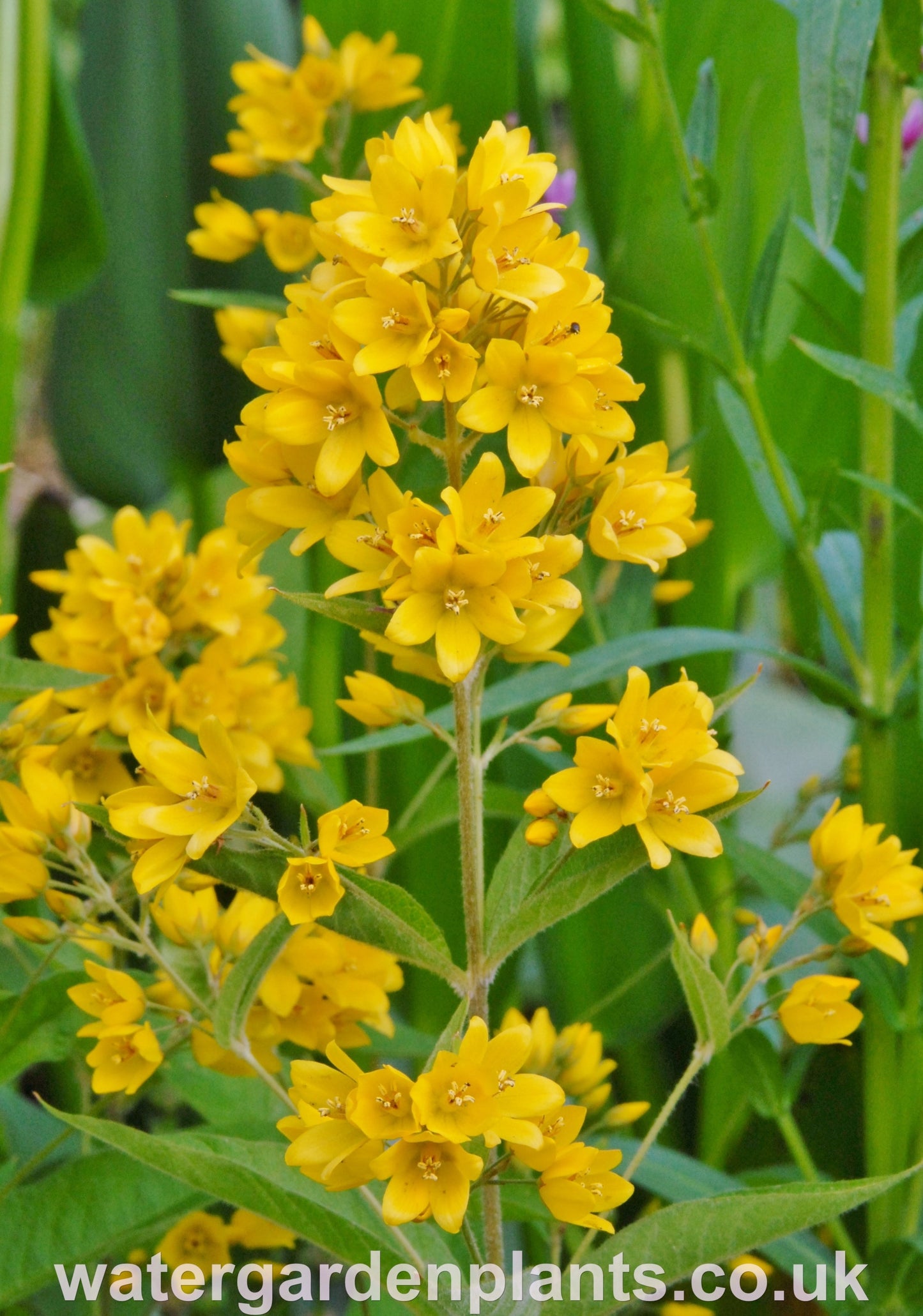
- Approximate height: 90 - 100cm (36 - 39 inches)
- Recommended water depth over crown of plant: 0 - 5cm (0 - 2 inches)
- Flowering time: July to August
- Flower colour: Yellow
- Supplied in the solid 9cm pot we grow them in - for best results we recommend potting on using a 2 litre pot
This is a British native plant with simple light-green, lanceolate leaves and abundant clusters of lovely yellow flowers. It is found in the wild in wet habitats such as marshes, river banks, wet woodland and meadowland, ponds, lakes and ditches. Despite sharing a common name, Yellow Loosestrife is actually not closely related to Purple Loosestrife. However, they are often found growing and flowering together in the wild, and their similar heights paired with contrasting flower colours make a very pleasing appearance in a native planting scheme. Like Purple Loosestrife, Yellow Loosestrife is beloved by bees and butterflies. While naturally a tall plant, trimming the shoots once or twice in spring before flowering can keep it a shorter height if desired, without reducing its ability to bloom.
It should not be confused with the garden Yellow Loosestrife, Lysimachia punctata, which is a non-native species usually found in drier soils.
If designing a planting scheme, we recommend approximately 1 Lysimachia vulgaris plant per square foot of ground or per linear foot of pond edge. Read more here on how to pot and care for your plant.

